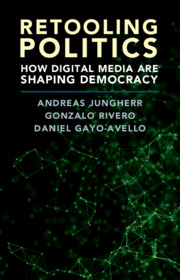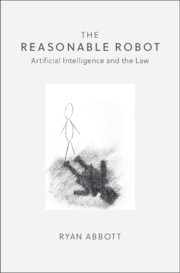Refine search
Actions for selected content:
48449 results in Computer Science

Retooling Politics
- How Digital Media Are Shaping Democracy
-
- Published online:
- 17 June 2020
- Print publication:
- 11 June 2020
Neural machine translation of low-resource languages using SMT phrase pair injection
-
- Journal:
- Natural Language Engineering / Volume 27 / Issue 3 / May 2021
- Published online by Cambridge University Press:
- 17 June 2020, pp. 271-292
-
- Article
- Export citation
Learning from noisy out-of-domain corpus using dataless classification
-
- Journal:
- Natural Language Engineering / Volume 28 / Issue 1 / January 2022
- Published online by Cambridge University Press:
- 17 June 2020, pp. 39-69
-
- Article
- Export citation
Design patterns for modeling first-order expressive Bayesian networks
-
- Journal:
- The Knowledge Engineering Review / Volume 35 / 2020
- Published online by Cambridge University Press:
- 17 June 2020, e28
-
- Article
- Export citation
Survey on Aerial Manipulator: System, Modeling, and Control – CORRIGENDUM
-
- Article
-
- You have access
- Export citation
ROB volume 38 issue 7 Cover and Back matter
-
- Article
-
- You have access
- Export citation
ROB volume 38 issue 7 Cover and Front matter
-
- Article
-
- You have access
- Export citation
Leibniz equality is isomorphic to Martin-Löf identity, parametrically
- Part of
-
- Journal:
- Journal of Functional Programming / Volume 30 / 2020
- Published online by Cambridge University Press:
- 17 June 2020, e17
-
- Article
-
- You have access
- Export citation
Improving trust and reputation assessment with dynamic behaviour
- Part of
-
- Journal:
- The Knowledge Engineering Review / Volume 35 / 2020
- Published online by Cambridge University Press:
- 17 June 2020, e29
-
- Article
- Export citation

The Reasonable Robot
- Artificial Intelligence and the Law
-
- Published online:
- 15 June 2020
- Print publication:
- 25 June 2020
2 - The Flow of Political Information
-
- Book:
- Retooling Politics
- Published online:
- 17 June 2020
- Print publication:
- 11 June 2020, pp 30-68
-
- Chapter
- Export citation
Frontmatter
-
- Book:
- Auction Theory for Computer Networks
- Published online:
- 15 May 2020
- Print publication:
- 11 June 2020, pp i-iv
-
- Chapter
- Export citation
8 - Digital Media and Democracy
-
- Book:
- Retooling Politics
- Published online:
- 17 June 2020
- Print publication:
- 11 June 2020, pp 212-235
-
- Chapter
- Export citation
Dedication
-
- Book:
- Auction Theory for Computer Networks
- Published online:
- 15 May 2020
- Print publication:
- 11 June 2020, pp v-vi
-
- Chapter
- Export citation
Index
-
- Book:
- Auction Theory for Computer Networks
- Published online:
- 15 May 2020
- Print publication:
- 11 June 2020, pp 278-280
-
- Chapter
- Export citation
1 - The Rise of Digital Media and the Retooling of Politics
-
- Book:
- Retooling Politics
- Published online:
- 17 June 2020
- Print publication:
- 11 June 2020, pp 1-29
-
- Chapter
- Export citation
1 - Introduction
-
- Book:
- Auction Theory for Computer Networks
- Published online:
- 15 May 2020
- Print publication:
- 11 June 2020, pp 1-10
-
- Chapter
- Export citation
